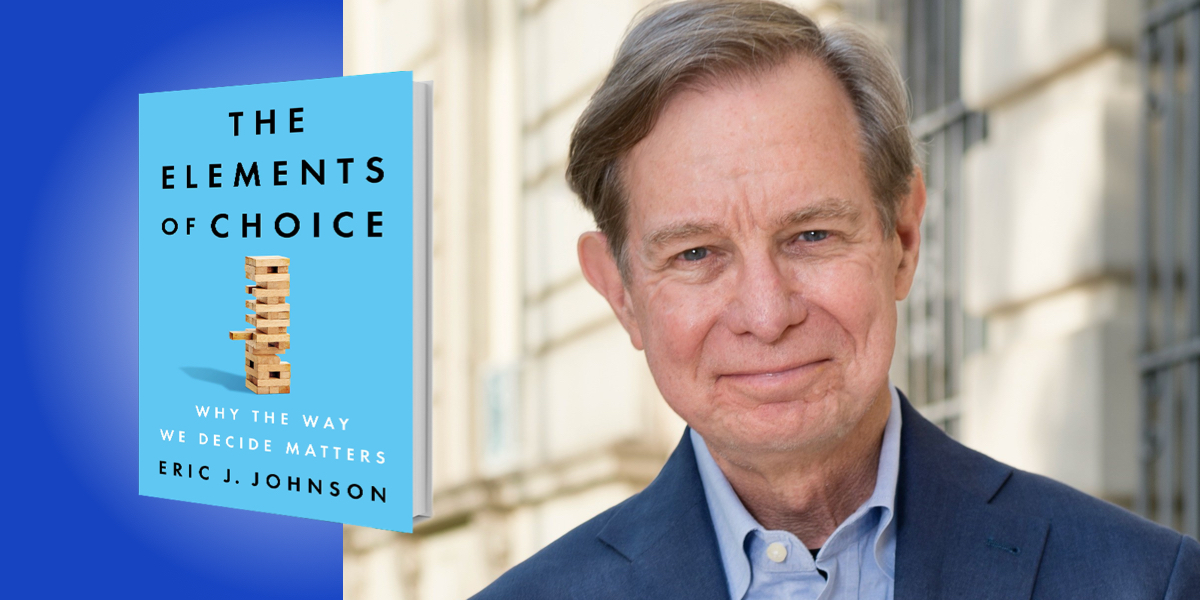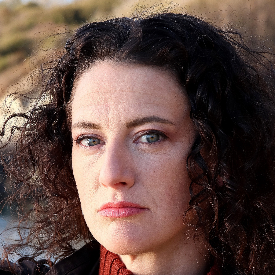Eric J. Johnson is the Norman Eig Professor of Business and the director of the Center for Decision Sciences at Columbia Business School. He has been the president of both the Society for Judgment and Decision Making and the Society for Neuroeconomics. He lives in New York City.
Below, Eric shares 5 key insights from his new book, The Elements of Choice: Why the Way We Decide Matters. Listen to the audio version—read by Eric himself—in the Next Big Idea App.
1. You are a choice architect.
Consider a restaurant menu: The delightful food on the menu, their prices, and their descriptions will influence what you choose, of course, but other things will as well. In fact, the designer of the menu is your hidden partner in making this choice. They have decided the order of items, organized them into categories (meat and fish or vegan vs. vegetarian) and decided how to describe the dishes. After all, you might make different choices if calories were listed, or if a heart healthy sticker were present. And then there’s the flowery phrases describing dishes! In short, the designer has influenced you in ways of which you are not aware. It is these decisions made by the designer that we call choice architecture.
Of course, you also pose choices. You suggested to your spouse a list of restaurants where you might dine. You made decisions about which restaurants to mention first and last, what categories to organize them into (e.g. fancy vs. casual), and how to describe them. Did you, for example, mention how long it would take to get to each one, or the quality of their service? Even if you didn’t realize it, your design decisions influenced your spouse’s choice.
“The designer has influenced you in ways of which you are not aware. It is these decisions made by the designer that we call choice architecture.”
Whether you are designing a website to sell insurance, giving your employees a choice of assignments, or giving your child a choice of how to get into bed, you are a designer, and you will influence their choices.
2. Pick the right defaults.
All choices have a default, something that happens if you do not actively make a choice. In much of the U.S., if you don’t register to vote, you are not eligible. In other places like Germany, you are eligible to vote by default. About 20 states in the U.S. have experimented with making most citizens eligible to vote by default—when they get a driver’s license, for example. This increases the number of registered voters, and more importantly, it increases the number of people voting. Defaults are everywhere, and they are influential—research shows that they increase the number of people willing to donate their organs to others.
Choosing a default is also important even if you do make a choice. Some think that the default option is an endorsement on the part of the designer, and many people pick the default investment plan at work because they think it’s a recommendation. Defaults also matter because we imagine that we have already chosen it, and that makes it seem more attractive. So when you choose a web browser on your smartphone, your choice is influenced by the default, and companies pay billions of dollars to be that default.
“Defaults are everywhere, and they are influential.”
3. Be aware of order.
In Texas, primary election candidates are randomly ordered on the ballot. Where you are on the ballot can make a difference in who wins; in one election, Paul Green ran against Rick Green. A study showed that whichever Green was listed first received a 20 percent advantage. And even in normal elections, the first name gets 1–2 percent more votes. So if we wanted elections to be fairer, we might change the order of names on the ballot for every election district or county—but most elections don’t do this. Also think about the order of hotels on a website; the hotel listed first is 50 percent more likely to be chosen simply by virtue of its position on the list.
But it’s not as simple as always being first; in other settings, like figure skating contests or the Eurovision Song Contest, it’s actually best to be last. Or think about when you go to one of those fancy restaurants where you don’t get a paper menu. It is a struggle to remember everything that is read to you, so once again, being last on the list is best. The key to understanding which is better is to understand how order affects your attention to the options.
4. Making decisions easier is not enough.
Choice architects can be tempted to make a choice feel easier. After all, that is why we hire good graphic designers, to make things approachable—but sometimes that is less useful than you think. Presenting fewer options simplifies a user’s experience, but it also means potentially leaving out the option that’s best for a particular person. So deciding how many options to present must balance the extra effort we require from choosers with the benefits they might get from seeing one more option.
“Presenting fewer options simplifies a user’s experience, but it also means potentially leaving out the option that’s best for a particular person.”
Presenting too many options can be problematic, too. In New York City, kids and their parents decide where to apply to go to high school. How many options do you think would be best? In New York, they get a book the size of an old telephone directory, with 769 different options. So how do we help them? Research shows that they do better when given a list of 30 schools, customized to where they live.
5. What you don’t know can hurt you—and those making choices.
Many things influence our choices, but neither designers nor those making choices tend to realize how large those influences really are. For example, researchers have asked people if a default, like a pre-checked box, made a difference in what they recently chose. Overwhelmingly they say no, even though the research says that it most likely did.
When given the ability to set a default, many people don’t do it, even when it costs them money. Good defaults, like those that encourage people to save more money for retirement, help everyone—but they are more effective for the least well-off. Having a bad default however, like saving nothing, hurts the most vulnerable the most.
To listen to the audio version read by author Eric J. Johnson, download the Next Big Idea App today:
































